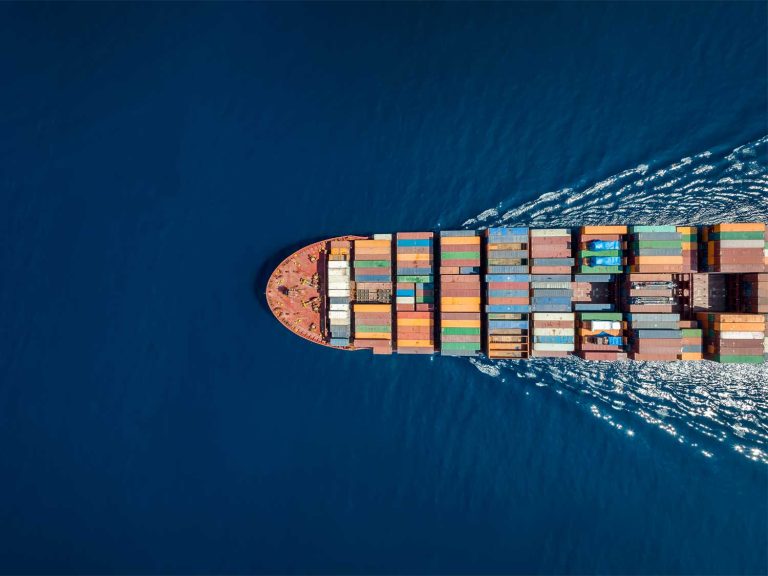
Date:
Ocean freight market report
Global shipping dynamics are shifting, with rates under pressure, 5% growth in global container shipping capacity, and the impact of the US’ new trade policies.
The ocean freight market is navigating a complex landscape, marked by operational and regulatory shifts. The Shanghai Containerised Freight Index (SCFI) has dropped since the start of the year, primarily due to the resolution of the US East Coast port strike. However, freight rates remain volatile, driven by service disruptions, alliance reshuffling, and geopolitical tensions in the Red Sea. Market capacity is also under pressure, with 30% of Far East westbound sailings expected to be blanked.
Capacity
Liner capacity growth has slowed following a record increase in 2024 and is now forecasted at 5% for 2025.
- Global port congestion hit a three-month high (10.3%), particularly at Chinese ports before Lunar New Year.
- The liner sector remains fully utilised, with only 0.2% of vessels (30 ships) idle.
- 16,000 TEU vessels are becoming the new standard as carriers shift away from ultra-large container ships (ULCS).
From February to April 2025, the ocean freight market is expected to be volatile, driven by the post-Lunar New Year slowdown and carrier alliance reshuffles:
- February: Capacity shortages are anticipated on Asia–North America and Asia–Europe lanes, with Transatlantic routes also under pressure, potentially increasing freight rates.
- March: Market balance may improve as new alliance networks stabilise, though capacity constraints could persist from Asia.
- April: Conditions should stabilise.
Rates & Schedule Reliability
- Freight rates are in decline across all trades, with:
- SCFI falling 17% since the beginning of 2025.
- WCI down 12%.
- Drewry World Container Index 118% higher than pre-pandemic.
- Despite strong demand leading up to Chinese New Year, rates have continued to fall due to service disruptions and alliance changes.
- Global schedule reliability has remained between 50%-55%, but port congestion has reached a three-month high.
- 10.5% of the global fleet (3.3 million TEU) is currently stuck in port congestion.
Demand Outlook
Demand trends remain mixed, with a rush in US-bound cargo ahead of potential tariff hikes, while the traditional seasonal slowdown is following Lunar New Year.
- December PMI data shows continued global growth disparities:
- The US is outperforming other developed economies.
- India leads emerging markets.
- Global business confidence has declined.
Looking ahead the Far East is projected to remain a critical driver of global container trade, contributing significantly to the 3.3% CAGR expected from 2026 to 2028. The region’s demand is forecasted to grow by 2.9%, underpinned by robust intra-Asia trade and strong export performance, particularly to North America and Europe.
Despite ongoing trade challenges, including regulatory and tariff impacts, the Far East’s economic resilience, led by China and India, is expected to support continued growth in freight volumes.
On the Transatlantic, demand is projected to remain stable, with North America expected to see a 2.5% increase in trade volumes. However, carriers are reducing capacity on this route, potentially impacting freight rates and capacity availability. The shift towards smaller vessels and the restructuring of carrier alliances may lead to temporary disruptions, but the market is likely to stabilise as the new network configurations take effect.
Market Developments
The US continues to lead developed markets, while China’s exports have exceeded expectations despite export tax rebate cuts. However, market outlook was already cautious, with business confidence waning amid concerns over economic growth, particularly in Europe and the UK. And now the de-stabilising impact of President Trump’s aggressive trade policies need to be factored in.
- Market imbalances persist across key trade routes:
- Asia outbound capacity is strained, creating pressure on freight rates.
- The Transatlantic trade lane has seen capacity reductions, with carriers downsizing vessels.
- The upcoming alliance reshuffle is expected to disrupt operations, leading to short-term demand surges until new networks stabilise.
- Demand exceeds capacity on multiple routes, particularly:
- Asia–North America
- Asia–Europe
- Asia–Middle East
- Some regional markets are more balanced, but capacity pressures remain high.
Conclusion
The ocean freight market continues to challenge, with rate volatility, capacity constraints, and shifting trade policies. While global liner capacity is set to grow by 5% in 2025, port congestion and alliance reshuffles are contributing to market instability, particularly on Asia–North America and Asia–Europe routes.
Despite the post-Lunar New Year slowdown and the impact of new US trade policies, demand from the Far East remains a key growth driver, underpinned by strong intra-Asia trade and export flows to North America and Europe.
As geopolitical risks and market disruptions continue to impact global shipping, building resilient supply chains and ensuring budgetary certainty, to mitigate risks and maintain stability, are more crucial than ever.
At Metro, our fixed-rate agreements on popular shipping routes provide a practical safeguard against rate volatility, offering predictable costs for effective budgeting. Whether you’re managing high-volume trade lanes or seeking greater stability for your supply chain, our tailored solutions can help you thrive in 2025.
To discover how Metro can strengthen your business and provide peace of mind, EMAIL our Managing Director, Andy Smith, today.
